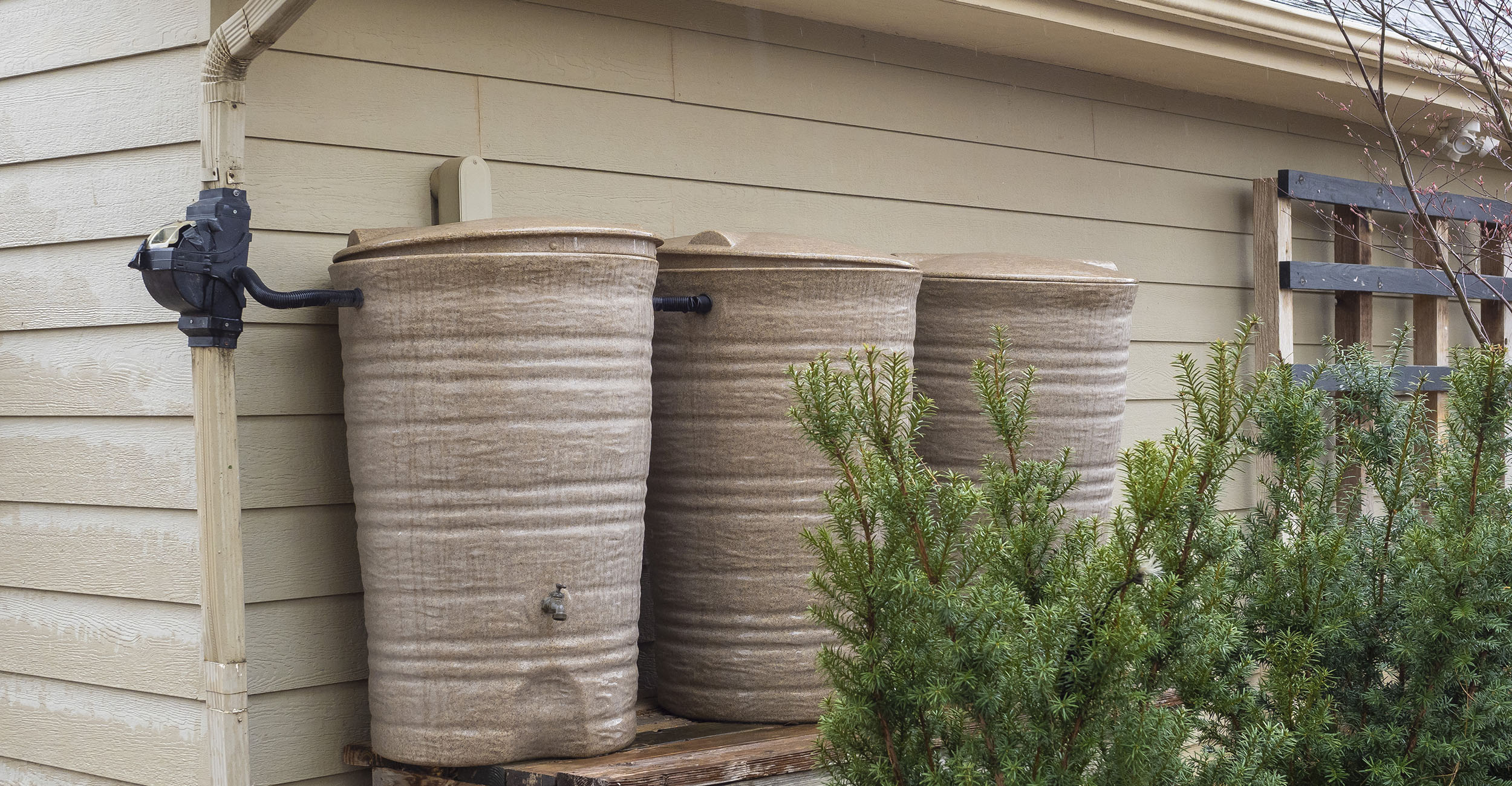
Managing and capturing rainwater in the landscape
Wednesday, April 13, 2022
Media Contact: Trisha Gedon | Communications Specialist | 405-744-3625 | trisha.gedon@okstate.edu
Rainwater catchment in the landscape is a great way to help conserve natural resources. There are various ways to capture rainwater, including the traditional rain barrel or installing a rain garden.
Qing Luo, Oklahoma State University associate professor and OSU Extension landscape architecture specialist, said a rain barrel can help reduce stormwater runoff by collecting the rainwater from the roof via the home’s downspout and storing it for later use.
“Rain barrels are relatively easy to attach to a downspout on your home’s gutter system and are a great way to help reduce flooding in areas close to your home,” Luo said. “They come in a variety of colors that are compatible to your home’s architecture and can also add to the design perspective of your landscape.”
To make the best use of a rain barrel, Luo said it must be placed in a convenient area where using the rainwater will be easy. Placing a barrel near a garden bed is ideal to use that water for garden irrigation.
“Your plants will appreciate the rainwater. Although the chemicals in drinking water are safe to consume, your plants appreciate this natural resource. In addition, a well-placed rain barrel makes it easier for parents to rinse off muddy shoes before going inside,” she said. “This water could also be used for cleaning a driveway, rinsing tools or washing your car. While it won’t save homeowners a lot of money on utility bills, capturing rainwater can cut down on city water use.”
Although the water flow from a rain barrel is less than the flow coming out of a faucet, placing the barrel on some sort of stand will help increase water flow. Stands can be constructed to coordinate with the barrel, so it blends in with the landscape.
Zack Henson, watershed quality manager with the City of Stillwater, said stored rainwater is great for homeowners to use in their landscape during a drought.
“We do caution people this water isn’t safe to drink as is,” Henson said. “It contains pollutants such as zinc and copper from roofing materials, as well as bacteria from birds. Keep in mind that a tenth of an inch of rain over 1,000 square feet equals about 60 gallons of water. It’s going to take a fair amount of rain to fill a rain barrel, but it adds up over time.”
Consumers may be concerned about stagnant water in a rain barrel becoming a breeding ground for mosquitoes. Henson said the fine mesh on the top of the barrel prevents adult mosquitoes from getting in and laying eggs. He also recommends tossing in a mosquito larvae control tablet, available at most home and garden stores, to help curb mosquito development inside the barrel.
Homeowners can also take advantage of rainwater by installing a rain garden. A rain garden is a planted shallow depression in the landscape that collects and soaks up rainwater runoff from paved areas, roofs and the surrounding landscape.
“A rain garden is purposefully situated at a lower spot in our landscape, so it can receive runoff after a rainfall,” said David Hillock, OSU Extension consumer horticulturist. “Its soil and plants are selected to absorb rainwater.”
There are three main components to a rain garden — inflow, basin and overflow. The inflow is where water enters the rain garden. The basin is the shallow depression where the water collects and where the plants are located. The overflow is the location where water flows out of the garden when there’s a significant rain event.
Hillock said rain gardens have several benefits, including:
- Absorbing 30% more rainwater than a regular lawn, reducing the chances of flooding in the landscape.
- More cost effective than traditional system of pipes and drains to treat the same amount of storm water.
- Filter out pollutants carried by rainwater and improve water quality before it reaches groundwater, rivers, streams and lakes.
- Creates a natural habitat for butterflies, birds and wildlife.
- Adds beauty to the landscape, resulting in increased property value.
“When selecting plants for a rain garden, make sure they tolerate wet roots for a short period of time,” he said. “As with all gardens, proper soil preparation and mulching will help the plants become established. Once established, the plants should be able to thrive on their own. However, we all know Oklahoma is prone to drought conditions, so supplemental watering may be needed to keep the plants alive during these extreme conditions.”
OSU Extension offers additional gardening and landscape resources online.
OSU Extension uses research-based information to help all Oklahomans solve local issues and concerns, promote leadership and manage resources wisely throughout the state's 77 counties. Most information is available at little to no cost.
